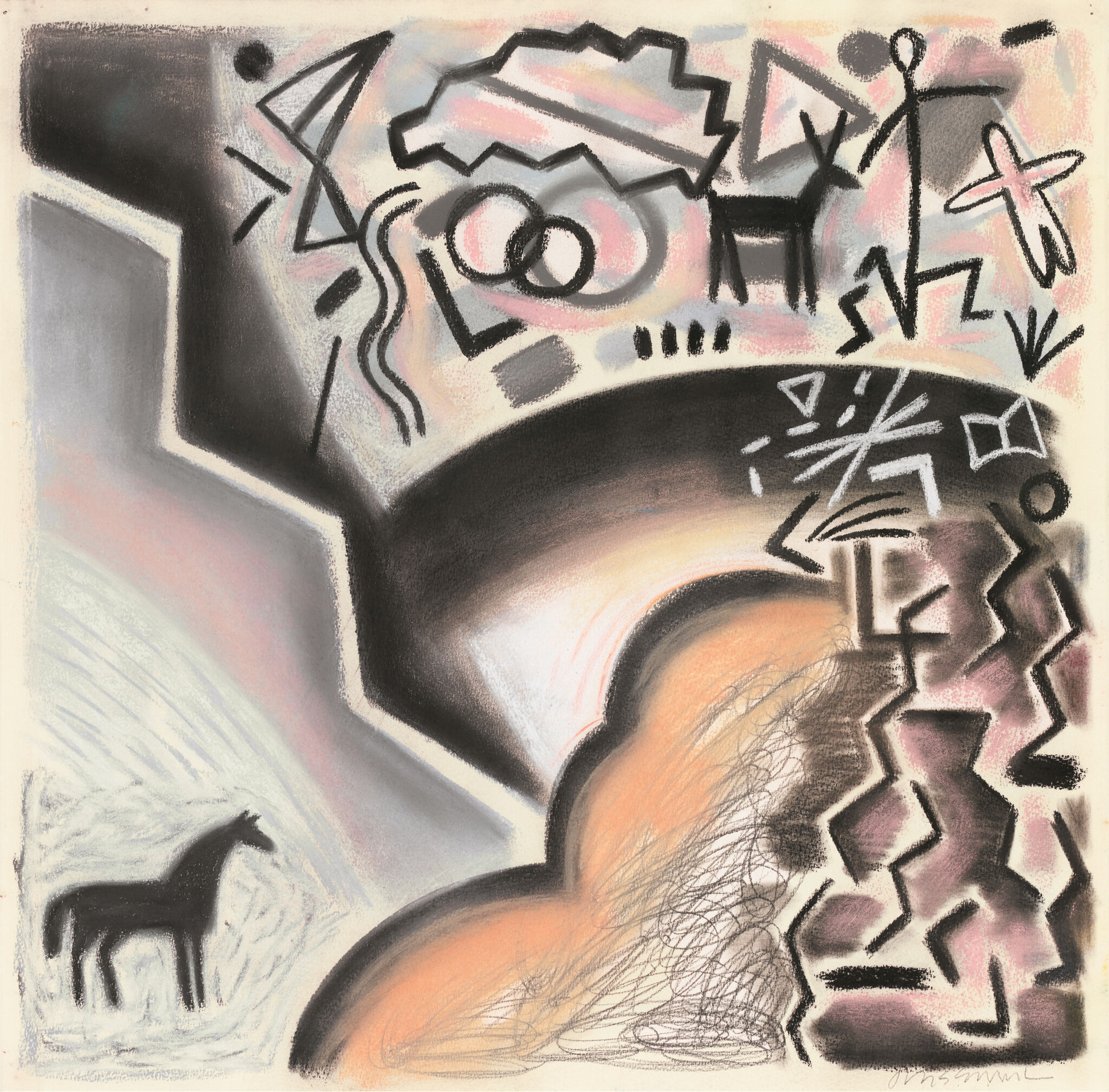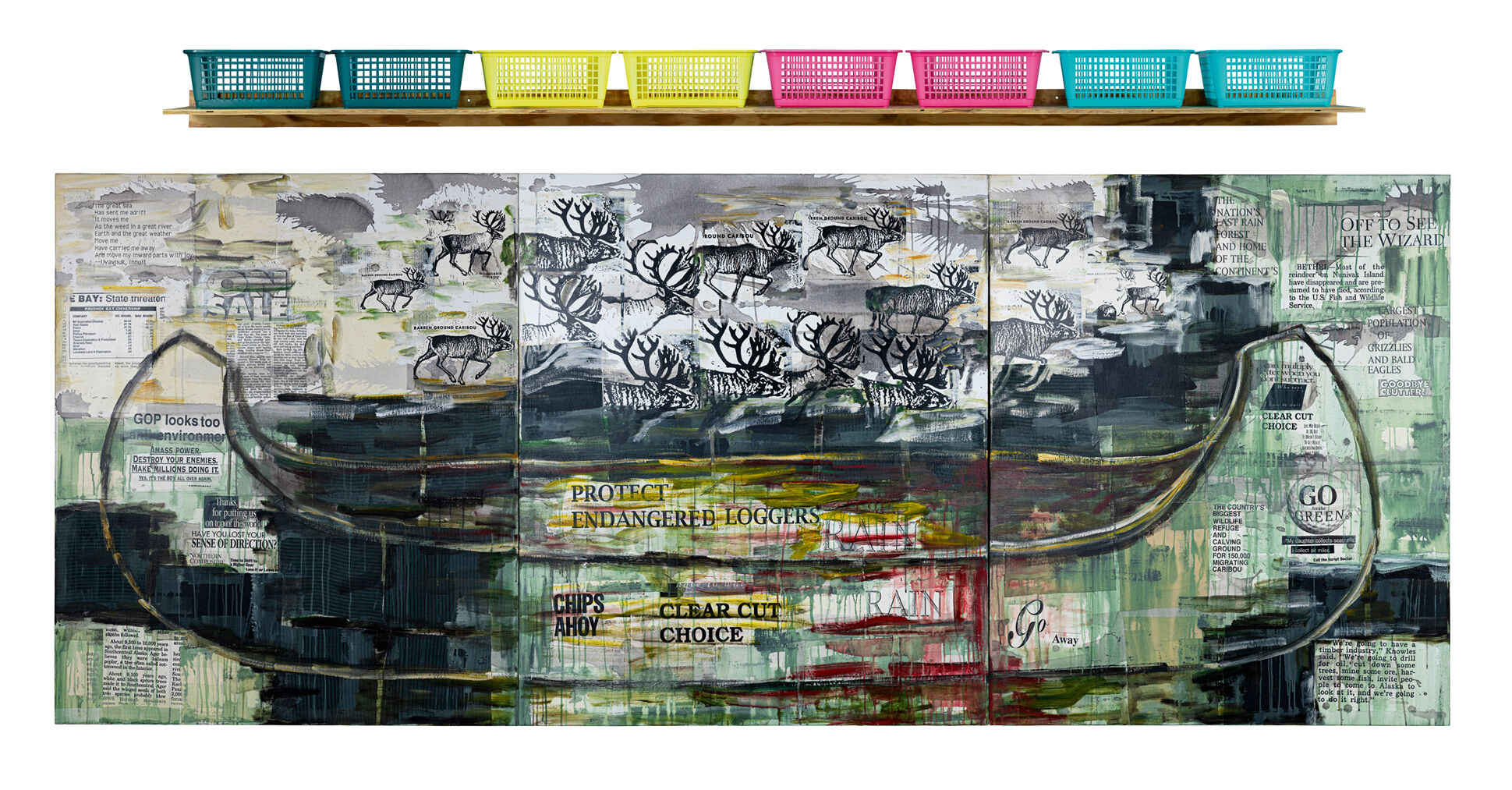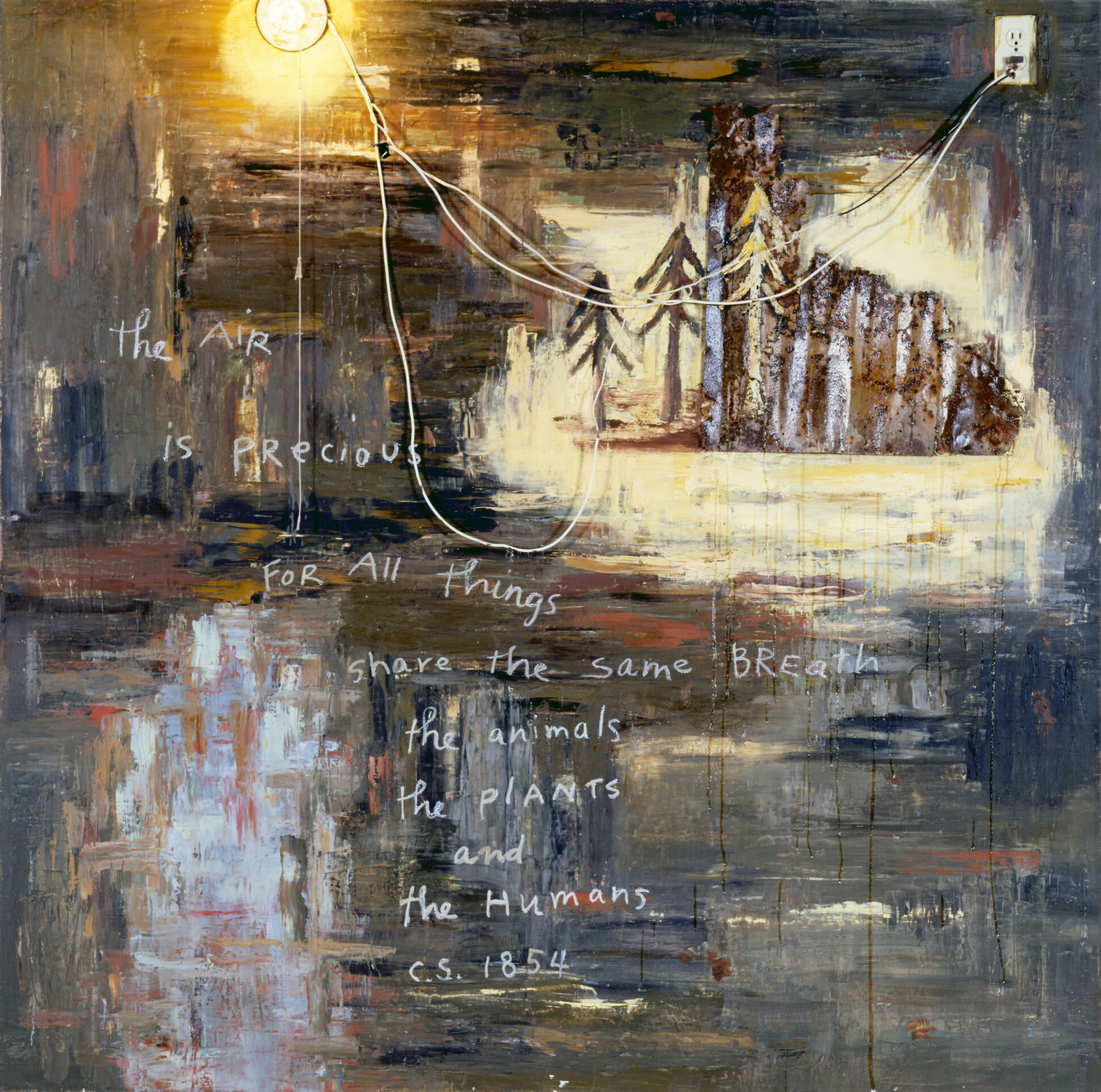Jaune Quick-to-See Smith: Memory Map | Art & Artists
Apr 19–Aug 13, 2023
Jaune Quick-to-See Smith: Memory Map | Art & Artists
For the Survival of Future Generations
2
In the mid-1980s, a proposed housing development in suburban Albuquerque, New Mexico, threatened to destroy a culturally significant lava-rock escarpment filled with ancient petroglyphs. Smith became involved with campaigns to save the area, which would eventually be recognized by the federal government as a national monument. The drawings and paintings of the Petroglyph Park series (1985–87) mark the first time Smith’s art responded to news reports of current events, an approach that became integral to later works.
The 1989–91 Chief Seattle (or C.S.) series continues Smith’s critique of unfettered industrialization and the reckless abuse of natural resources. These works grapple with broader global and regional concerns, such as the modern reliance on fossil fuels, a major contributor to acid rain. Smith combines objects like light bulbs, spoons, and garden hoses with canvases covered in thick paint, and overlays phrases attributed to the nineteenth-century Duwamish and Squamish leader Chief Si’ahl (Seattle) that emphasize the interdependence of humans and nature. Mainstream environmentalism at the time concentrated on issues like pollution and recycling, but Smith’s work draws a clear link between the exploitation of the land and the blatant disregard of treaties made between the US government and Native nations. With these paintings, Smith implores viewers to understand their connection to the earth and forestall ecological crisis for the survival of future generations.





